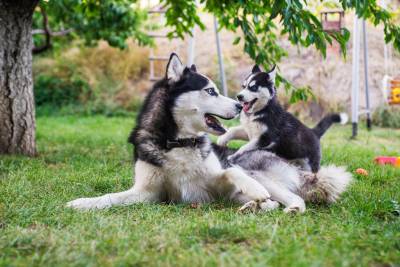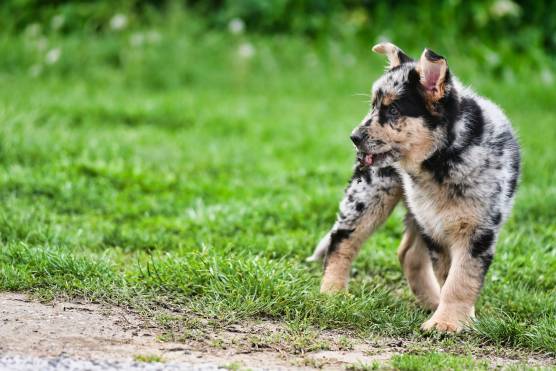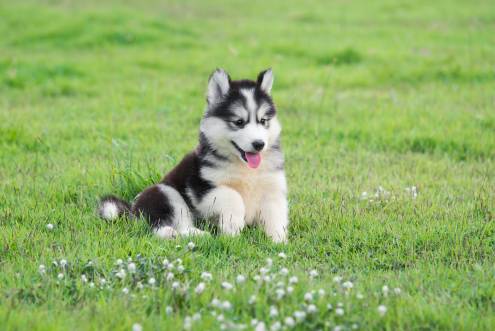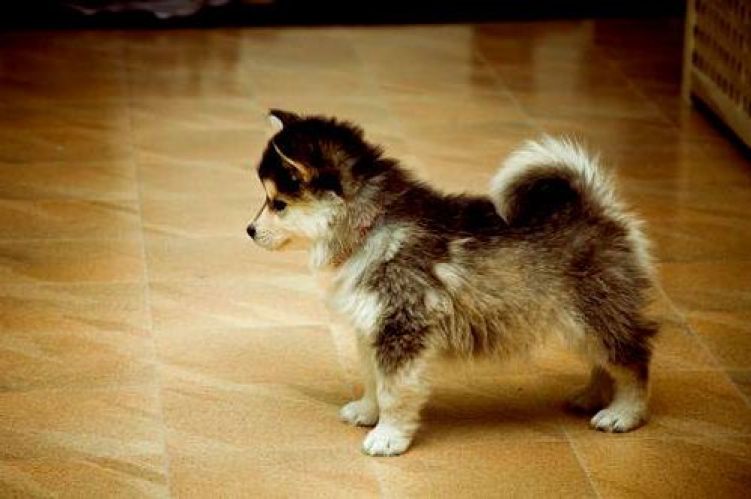Connect with a verified veterinarian in minutes. Licensed vets are available 24/7 to answer your questions. No need to worry about your furry family member.
Siberian Huskies are beautiful dogs! They look a bit like their wolf ancestors, but they’re completely domesticated and make excellent family companions!
Have you recently adopted a Siberian Husky? Are you wondering how big your dog or puppy will be? You’ve come to the right place to find answers to these and other questions! We’ve put together weight charts and more. Let’s get started!
Siberian Husky History
Siberian Huskies are working dogs that were originally bred by the Chukchi people, who are Siberian nomads. No one knows the precise history of these lovely dogs; however, scientists have found that these dogs are one of the oldest dog breeds around. The Chukchi bred the dogs to help transport their human’s belongings, and they were also family companions.
The Siberian Husky was eventually taken to Alaska in 1908, where they were used as sled dogs during the gold rush. From then to now, the dogs are still used as sled dogs, but they’re also wonderful family companions.
When Do Husky Puppies Stop Growing
Siberian Husky puppies usually reach their full size by the time they’re a year old. However, they still gain weight after that. When they reach 15 months, the Husky puppy has bulked up nicely. Even so, their muscles continue to develop. Some of the dogs continue to gain weight until they’re about 3 years of age.
There’s a difference between male and female dogs; however, females don’t develop the same bulky muscles as male dogs. As a result, females usually reach their full weight at about 2 years of age.

Review symptoms, medications & behavior to keep your pets healthy with a Vet Online in just minutes.
Ask a Vet Live NowSiberian Husky Weight Chart
We’ve put together a helpful Siberian Husky Weight Chart to help you better understand how puppies grow.
| Male Weight Range | Female Weight Range | |
| Age | Male Husky | Female Husky |
| 2 months | 10-15 lbs (4.5-6.8 kg) | 8-12 lbs (3.5-5.5 kg) |
| 3 months | 23-30 lbs (10-14 kg) | 18-30 lbs (10-14 kg) |
| 6 months | 33-43 lbs (15-19 kg) | 26-36 lbs (12-17 kg) |
| 9 months | 40-53 lbs (17-24 kg) | 33-46 lbs (14-21 kg) |
| 12 months | 43-57 lbs (19-26 kg) | 34-49 lbs (15-22 kg) |
| 15 months | 45-60 lbs (20-27 kg) | 35-50 lbs (16-23 kg) |
One method to use to weigh your puppy is to first stand on the bathroom scale yourself. Note your weight. Then pick up your puppy and hop onto the scale and note the number. Now, subtract your weight (the first number) from your combined weight with the puppy (the second number). The result is the weight of your puppy!
Remember that female Huskies are smaller than males. Use the size chart above to make sure your little girl puppy is growing as she should!
Siberian Husky Puppy Growth: What to Expect
Puppies are so cute and sweet! However, they don’t stay that way for long! They tend to grow up fast! We’ve put together some information on what you can expect at each milestone of your puppy’s development!
Birth to Two Weeks
Siberian Husky puppies are small, wriggling, darling fur babies from the time they’re born. They can’t see or hear at this stage. You’ll notice their eyes are completely closed. During this time, the puppy’s internal organs are still developing.
During this time, the puppies are completely reliant on their mother’s milk. They’re not ready for solid food yet, and they’re also not very active or playful. Remember, their internal organs are still developing!
However, the puppies will wriggle over one another in the search for their mom. Sometime between 2-4 weeks, the puppies’ eyes open! How cute they are as they explore their new world.
Three to Eight Weeks
It’s during this stage that Husky puppies start to become extraordinarily cute! Their eyes are open, and the puppies are ready to explore. This is also the time they begin to first walk. Their mom continues to take care of the puppies and doesn’t allow them to wander too far.
The puppies also begin making their first sounds at this age, and their hearing is also developing. However, the puppies are still not ready for solid food. They continue to rely on their mom’s milk.
Eight Weeks to 20 Weeks
During this state, Siberian Husky puppies are becoming very lively and adventurous! During this time, the pet parent may help the mom and the puppies. It’s the pet parent’s job to help begin training the puppies (though the mom does this, too) and begin the process of socializing these little cuties.
It’s important to avoid being overprotective at this point. This can make the puppies nervous, and they could grow into nervous adult dogs. The pet parent should only take measures to keep the puppies safe. For instance, if the puppies are interacting with another pet (like the cat!). Then being a referee may be necessary! Even so, the puppies need to learn how to manage their new lives without too much interference.
The goal is to help the puppies grow up into strong, fearless dogs. If the pet parent is too overprotective, the opposite may be the result.
Also, during this time, the mom may begin weaning her puppies. However, even during the process, the mother allows the puppies to feed once in a while.
Some believe the puppies can be sent to their new homes by the age of 6 weeks. However, that’s not recommended. The puppies need those extra two weeks with their mother to learn how to be dogs and have her comfort for a little bit longer before leaving.
Three Months to Six Months
Between three and six months, the puppies will be in their new homes! Here, they will continue to grow for the next several months. It’s also during this time that socialization is very important. Pet parents should help their puppy learn about new environments, meet people, and more.
Also, during this time, it’s a good idea for puppies to be in contact with other animals. The reason is that Siberian Huskies have a strong prey drive, which may cause them to chase after cats and other small animals. This tendency can be helped through obedience training and socialization.
That leads us to the next important note on this stage. Siberian Husky puppies should start obedience training now. This is the best time to train the pups and help them socialize.
Both training and socialization make the adult dog more well-balanced and easygoing. They’re confident and know how to handle themselves in different situations. Plus, with obedience training, they learn to respond to cues. All of this is essential for Siberian Huskies.
Six Months to Twelve Months
Now is about the time to talk with the vet about spaying or neutering the puppy. Yes, they’re not mature yet; however, if you’re not planning on breeding them, then now is a good time to consider “fixing” the puppy.
Training and socializing need to continue during this time. Older puppies will try to push their limits; however, it’s essential to let the puppy know what the boundaries are.
Dogs this age are also full to overflowing with energy! So, it’s crucial to ensure they get all the exercise they need to release pent-up energy. If Siberian Huskies are bored, have too much energy, and are left alone for long periods, they may become destructive. Huskies know how to entertain themselves. We guarantee you won’t be happy with the results! So, make sure your dog gets plenty of exercise and isn’t left alone too much.
This is also the perfect time to make daily walking part of your dog’s routine. The dogs may enjoy a couple of walks each day, which also helps release all that energy.
Will Spaying/Neutering Make a Difference in my Husky’s Growth?
Neutering helps to reduce a male’s aggression and sexual urges. However, it may result in weight gain, hypothyroidism, and bone issues. However, it can also reduce the dog’s chance of getting cancer.
In females, spaying can keep her from going into heat and avoid pregnancy.
If a dog is spayed or neutered too early (as in too young), the dog’s growth plate may be affected. The plate closure could be delayed. This may cause some dogs to become taller than they should. It could also cause joint problems when the dog’s older.
Adult Dog
After twelve months, the puppy finally becomes something like a human teenager. Oh boy! They’re adults and want to enjoy this new life! The pups continue to need training and socialization at this age, or there will be bad behaviors to deal with later. Don’t say we didn’t warn you!
If the pup has been trained and treated the right way, the result should be a beautiful adult dog. They will be a loving family companion and know how to handle themselves in most daily situations.
When is a Siberian Husky Fully Grown?
In most cases, a Husky will reach their full weight and height between the ages of twelve and fifteen months.
Some dogs may continue to grow until they’re fifteen to eighteen months. It all depends on the dog’s genetics, nutrition, and overall health.
Male vs. Female Siberian Husky Size Differences
Male Huskies are more muscular and bulkier than females, which means the males grow taller and heavier, too. Male Huskies stand between 21-24 inches tall, while females are 20-22 inches tall.
While this doesn’t sound like a huge difference, the male dogs look significantly larger than the females. Males usually weigh between 44-60 lbs, while females weigh between 35-51 lbs.
Is My Siberian Husky Too Fat?
Siberian Huskies, like other dog breeds, can become overweight or even obese. The dog may be overweight or obese if it’s not possible to feel their ribs beneath the skin. However, we must say a dog’s ribs should never protrude (stand out too much).
Another way to see if the Husky is too fat or not is to view them from above. Dogs at a healthy weight will have a distinct waist. If you don’t see their waistline, the dog may be too fat.
Finally, you can always check the chart we included earlier in this article! This will help you see if your dog is too fat or not! If you’re still in doubt, then we recommend asking your vet.
How to Help a Siberian Husky Lose Weight?
If your fur baby is overweight or obese, then it’s a good idea to talk with your vet. They may recommend similar steps to the ones we share below:
Reduce the amount of food: reducing the amount of food can help your dog lose weight. However, always check with the vet. Never reduce your dog’s food on your own unless you have previous experience. And be careful about reducing a puppy’s food. It’s always best to talk with the vet about your dog’s weight problem.
Increase exercise: more exercise is a great way for a dog to lose weight. Exercise is healthy and works off fat and calories. You can make this process fun with walks, jogs, and playtime, too.
Reduce treats: reducing the number of treats your fur baby eats can also help him lose weight. Another possibility is to find reduced-calorie dog treats. However, avoid giving your dog more of these treats, as they can cause weight gain. It’s the same as any other food. If your dog eats too many calories, he will gain weight.
Is My Siberian Husky Underweight?
Sometimes it’s hard to tell if a dog is underweight or not. Young Huskies may look thin and lithe. Here, again, you can check the dog’s ribs. If they are protruding, he’s not getting enough to eat. But also remember the dogs will fill out as they get older.
Here, again, you can check the weight chart we shared earlier. This will help you see if your dog fits into the normal weight range. And if you still have questions, be sure to talk with the vet.
Summing It Up
As you can see, Siberian Huskies go through many changes as they go from puppies to adult dogs! They grow and evolve in wonderful ways! It’s a thrill to watch your puppy grow up!
If you’re ever worried about your Husky puppy’s weight, check the chart and call the vet. That way, you can keep your puppy happy and healthy while ensuring he grows up to be a healthy, happy adult Siberian Husky!
Connect with a verified veterinarian in minutes. Licensed vets are available 24/7 to answer your questions. No need to worry about your furry family member.

Julie
Julie is a graduate of the University of North Carolina, Wilmington, where she studied Animal science. Though contrary to the opinion of her parents she was meant to study pharmacy, but she was in love with animals especially cats. Julie currently works in an animal research institute (NGO) in California and loves spending quality time with her little cat. She has the passion for making research about animals, how they survive, their way of life among others and publishes it. Julie is also happily married with two kids.
Review symptoms, medications & behavior to keep your pets healthy with a Vet Online in just minutes.
Ask a Vet Live Now




